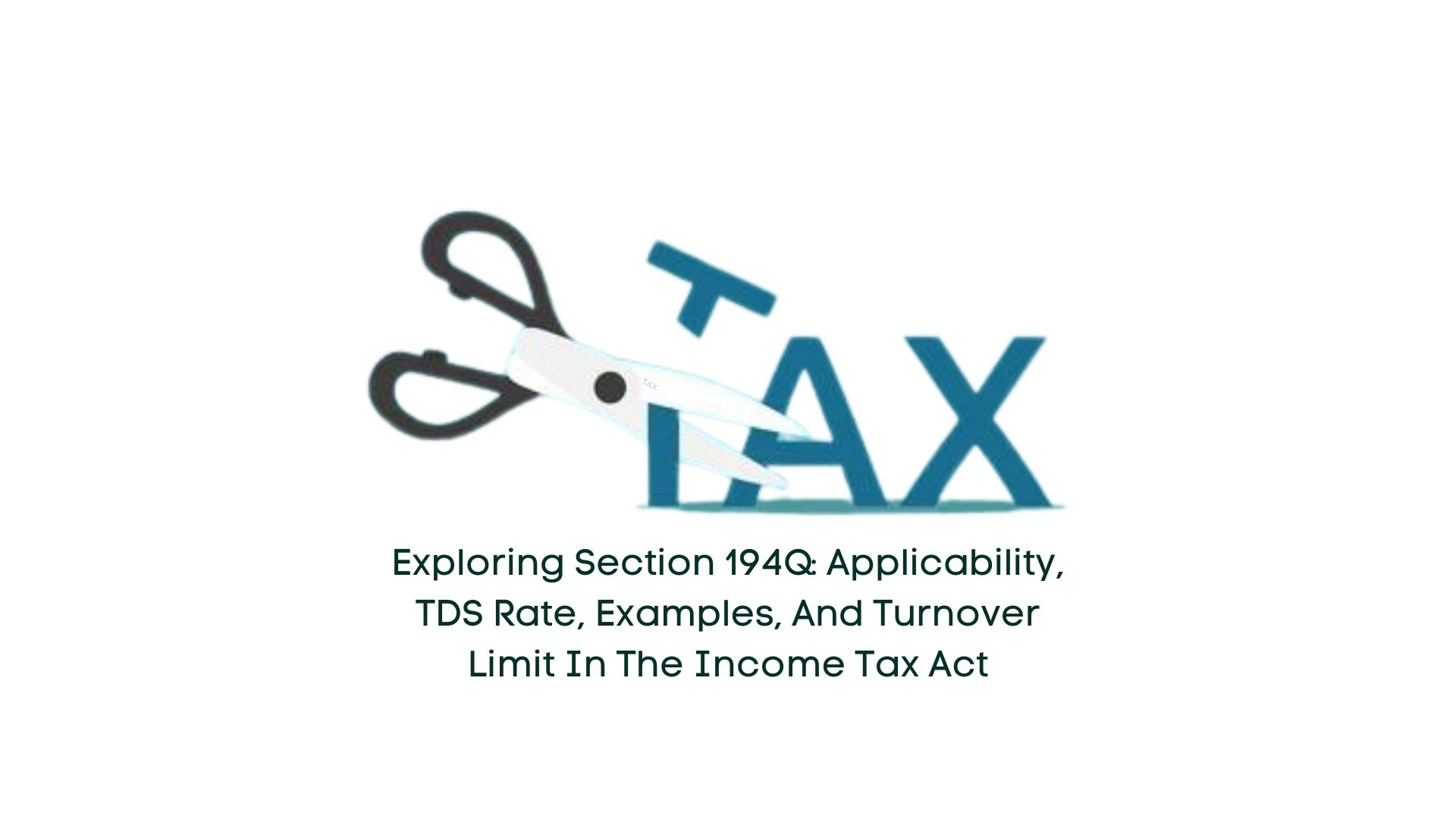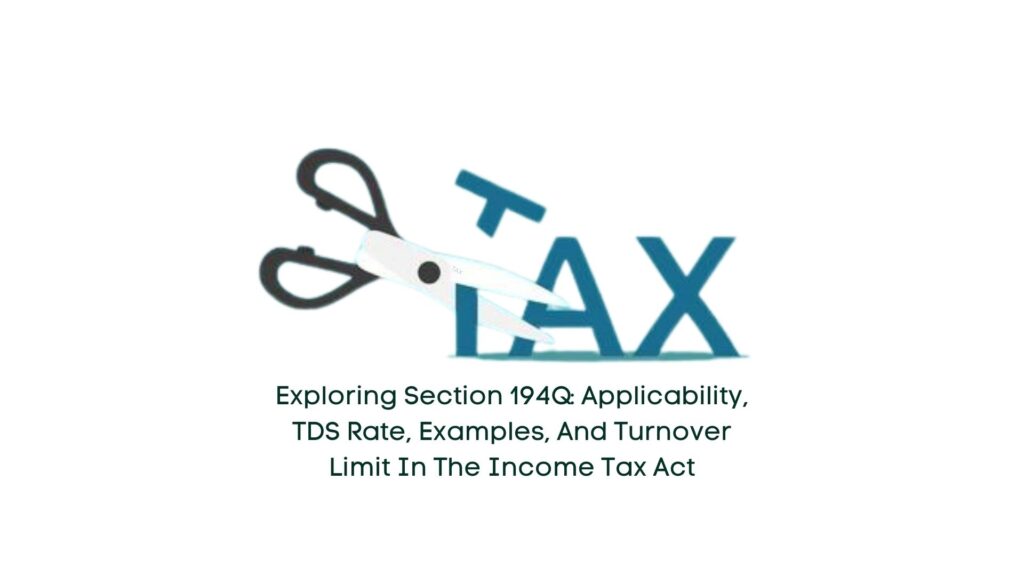
28 Feb Exploring Section 194Q: Applicability, TDS Rate, Examples, and Turnover Limit in the Income Tax Act

Navigating the intricacies of tax regulations is an integral aspect of financial management for businesses and individuals alike. Among the recent amendments introduced to the Income Tax Act, 1961, Section 194Q stands out as a pivotal provision reshaping the landscape of Tax Deducted at Source (TDS) in the realm of procurement. This article serves as a comprehensive guide, shedding light on the applicability, TDS rate, example scenarios, and turnover limit stipulated under Section 194Q. By unraveling its complexities and providing practical insights, this discussion aims to empower readers with a deeper understanding of their tax obligations and compliance requirements in the dynamic domain of income taxation.
Applicability and Scope:
Section 194Q pertains specifically to buyers falling under certain criteria:
- Buyers with turnover exceeding Rs 10 crore in the previous financial year.
- Buyers responsible for payments to resident sellers for goods exceeding Rs 50 lakh in value.
Illustrative Example:
For instance, a buyer with a turnover exceeding Rs 10 crore in the fiscal year ending March 31, 2021, is mandated to deduct TDS from resident sellers for purchases surpassing Rs 50 lakh during the subsequent financial year (2021-22).
Rate of TDS and Calculation:
TDS is levied at 0.1% on the amount exceeding Rs 50 lakh in a fiscal year from sellers with purchases exceeding this threshold.
Applicability Commencement and GST Considerations:
Section 194Q became effective from July 1, 2021. It’s crucial to note that turnover calculations exclude GST, while TDS calculations include GST.
Timing of TDS Deduction: TDS should be deducted upon crediting the seller or making payments, whichever occurs earlier. Immediate deduction is required if advance payments are made.
Penalty for Non-furnishing PAN:
Failure of sellers to furnish PAN results in TDS deduction at 5%, contrasting the standard 0.1% rate. The absence of PAN incurs a higher tax rate to the tune of 20% under different circumstances.
TDS Deposit Due Date and Return Filing: TDS deposits are due by the 7th day of the subsequent month. Quarterly TDS returns (Form 26Q) must be filed by specific deadlines.
Exceptions and Amendments:
Exceptions exist where transactions are subject to alternative provisions such as Section 194O or Section 206C(1H). Notably, Section 194Q takes precedence over Section 206C(1H) in overlapping scenarios.
Additional Amendments and Compliance:
Further amendments under Section 194Q entail deductions upon crediting amounts to ‘Suspense accounts’ and pertain solely to resident sellers. Non-compliance may result in expenditure disallowance up to 30%.
Declaration Format:
A prescribed declaration format facilitates compliance, ensuring clarity on TDS deduction obligations.
Conclusion:
In conclusion, Section 194Q, introduced by the Central Board of Direct Taxes, stands as a crucial provision under the Income Tax Act, 1961. Effective from July 1, 2021, it imposes TDS obligations on buyers engaging with Indian sellers for amounts exceeding Rs 50 lakhs. Understanding its nuances is essential for seamless compliance and risk mitigation.


No Comments